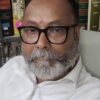The first World Humanitarian Summit, held on May 23 and 24, 2016, in Istanbul, convened 9,000 participants from 173 member-states, including 55 Heads of the states and governments, hundreds of private sector representatives, and thousands of people from civil society and non-governmental organisations, in its overarching theme ‘One Humanity’. In its 70 years, the United Nations has never come together at this scale to discuss the pressing challenges that are resulting in so much suffering today. Lenin states that the World Humanitarian Day (WHD) is the day to remember the millions of people affected by war, natural disasters, sickness, torture, organised violence and famine, and those who are working to relieve their suffering. An exclusive report as part of the Special Feature on WHD in Different Truths.
World Humanitarian Day (WHD) is held every year on August 19 to recognise the aid workers that risk their lives in humanitarian service, to celebrate the spirit of humanitarianism and to mobilise people to advocate for a more humane world.
This year, WHD follows one of the most pivotal moments in the history of humanitarian action: the World Humanitarian Summit, held on May 23 and 24, in Istanbul. During the Summit, world leaders came together to declare their collective support for the new Agenda for Humanity and commit to bold action to reduce suffering and deliver better for the millions of people in need of humanitarian assistance.
Under the overarching theme of ‘One Humanity’, WHD will promote how the world came together in Istanbul around the Agenda for Humanity, and how the commitments made at the World Humanitarian Summit will help the 130 million people around the world, who need humanitarian assistance to survive. One Humanity speaks to how our shared human experiences bind us across divides, and create a common responsibility to demand action for the most vulnerable and at risk of being left behind.
The first World Humanitarian Summit, held on May 23 and 24, 2016, in Istanbul, convened 9,000 participants from 173 member-states, including 55 Heads of the states and governments, hundreds of private sector representatives, and thousands of people from civil society and non-governmental organisations. In its 70 years, the United Nations has never come together at this scale, with this many different stakeholders, to discuss the pressing challenges that are resulting in so much suffering today. This is a recognition that today’s challenges can only be adequately addressed through the collaboration of national governments, civil society, people affected by crises, the private sector, national and international organisations and others. The generosity and substantive contribution of the government and the people of Turkey have been invaluable in facilitating and enabling this historic gathering.
Today is a day to remember the millions of people affected by war, natural disasters, sickness, torture, organised violence and famine, and those who are working to relieve their suffering.
Those in need desperately require our help, but our ability to reach them is, sadly, increasingly challenged and at risk. Humanitarian workers have no other agenda than saving lives and delivering the basics of life – food, water, shelter, medical care, and protection for the most vulnerable. Yet in too many places where humanitarians work, whereas once they were respected, today they are targeted.
Violent Attacks
Violent attacks on humanitarian personnel are increasingly frequent and brutal. Since the beginning of the last decade, the number of attacks has tripled, resulting in more than 100 deaths annually.
We face a future in which more humanitarian aid will be needed to cope with the impact of climate change and natural hazards, and the rising numbers of civilian victims of internal conflicts.
When humanitarian aid workers do not have full and free access, many hundreds of thousands of the people they need to reach cannot receive the quantity or quality of assistance they require.
Better acceptance of humanitarian work by state and non-state actors alike is desperately needed. We need to communicate that aid workers represent no one ideology, culture or standpoint.
The vast majority of aid workers come from the countries in which they work. Most of the victims of attacks on aid workers are these same national staff.
These brave individuals are united by their shared commitment to humanitarianism, which is a universal value and responsibility. They work on behalf of everyone.
Preventing them from doing their work harms no-one more than the most vulnerable.
 Today, a terrible crisis in the Horn of Africa is unfolding. Humanitarian workers’ primary focus is on trying to get humanitarian assistance to the most severely affected people in what is a highly insecure political and security environment.
Today, a terrible crisis in the Horn of Africa is unfolding. Humanitarian workers’ primary focus is on trying to get humanitarian assistance to the most severely affected people in what is a highly insecure political and security environment.
Gaining access to these people is the uppermost priority for the humanitarian community. It is thus an appropriate moment to call for a renewed commitment to humanitarian principles by all concerned.
On this WHD let us once again remember the millions of people in need of help around the world, the humanitarians, who have lost their lives in the course of their work, their loved ones left behind, and the thousands of aid workers who have refused to be deterred and follow in their footsteps.
The overall goal of the initiative, ‘Healing and Empowering the Marginalised Communities of India’ is to sustain a strong testimonial campaign as empathetic humanitarian support to survivors, contributing to eliminate impunity for perpetrators of torture in India. Specific objectives include strengthening a solidarity movement of the torture and organised violence -free villages, detention places and prisons and cities; promoting psycho-social support of the survivors, their families and communities; and mobilising civil society and academia towards advocacy for justice and prevention of the survivors of torture and lobby and advocacy for the survivors of torture and organised violence (TOV) at the sub-regional and international levels.
PVCHR: Bridging the Capacity Gap
PVCHR principles are tested and aligned with the human rights based approach. The dynamics of power and politics between rights holders at local level to duty bearers at districts and national level are analysed thoroughly before and during action. The motto is from policy to practice and practice to policy. PVCHR is bridging the capacity gap between duty and rights holders and create channels for the voice of local communities to be listened to by decision makers at district and national level.
PVCHR is active in the three themes– urban, detention and rehabilitation – and they perceive themselves as a grassroots psycho-social organisation. PVCHR is recognised in India and internationally for its work against violence affecting poor neighbourhoods of India. National and international dailies and broadcasting companies report on torture and violence with information from PVCHR.
PVCHR is coordinator in the South Asian Network against Torture (SANTI. Interest from other human rights organisations in the project strategies is growing and the outlook of PVCHR is determined to work for building a regional movement on Testimonial Therapy covering South Asia [2].
The ‘Model Village’ is the key change concept and PVCHR is making substantial progress in reducing torture and violence in 70 villages as part of the preventive campaign ‘torture free villages’. The concept has received tremendous attention and other Indian NGOs and they have taken up similar principles. Prime Minister Modi has embraced the Model Village perspective in his political speech-making on promoting local development.
The pre- post- effect study on testimonial therapy (TT) was based upon 500+ torture and organised violence cases by PVCHR. Data analysis and article writing was assisted by DIGNITY. The article concluded that TT has a promising positive therapeutic effect on the survivors. TT facilitator’s manual has been transformed into local languages and the training on TT has been offered to other organisations. More than 100 Indian CSO organisations are enrolled in the National Alliance on Testimonial Therapy.
India has twice given promises at UPR sessions for ratification of the CAT. Broken promises are common in Indian politics and the draft Anti-torture law has not moved further by the select committee, since 2010. The PVCHR review and recommendations to improve the draft law was based upon the analysis and recommendations offered by the lawyer, Emily Reilly from DIGNITY. Prospects for passing the law are good under the prevailing political circumstances.
Torture, Rule of Law and Poverty: Analysis of the individual cases of torture handled by PVCHR illustrates the critical failings in a dysfunctional public justice system in India.
Prison conditions in India are appalling with all the known symptoms of poor correctional systems. There is no unified correctional system in India but many different systems in the individual states. The biggest problems are found in the district prisons. In many ways PVCHR has made similar findings and analysis as in The ‘Locust Effect’.
Communal Violence: Post 9/11 India has seen increasing discrimination and communal attacks against Muslim and Madrasa schools. Muslim areas are often target of anti-terror campaigns. About 54% of prisoners in Indian prisons are Muslims and 28% are Dalits. Right wing Hindu fascists orchestrate planned communal riots, such as in Aligarh (Uttar Pradesh).
The attacks on Muslims are frequent and the consequences are destruction of livelihood – a paradox as Muslims constitute the backbone of Indian small scale industry. PVCHR has been able to document the role of police in attacks on Muslims. Ultimo 2013 PVCHR completed the EU funded project ‘Police Torture against Muslim Minorities’. The project documented severe human rights violations and the general socio-economic deprivation of Muslim communities.
©Lenin Raghuvanshi
Pix from Net.






 By
By
 By
By
 By
By
 By
By